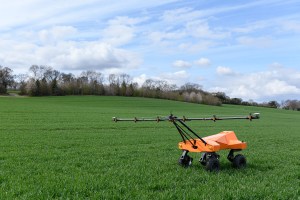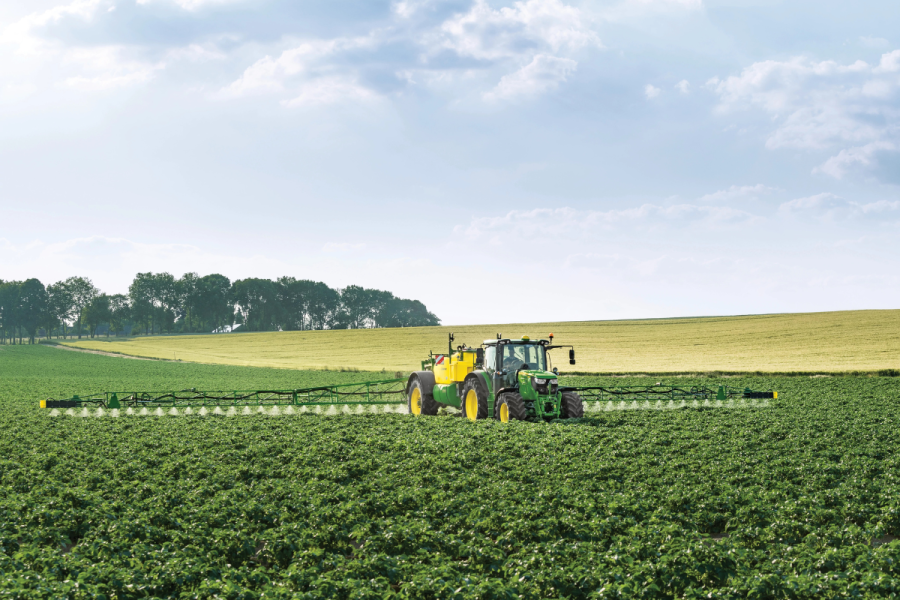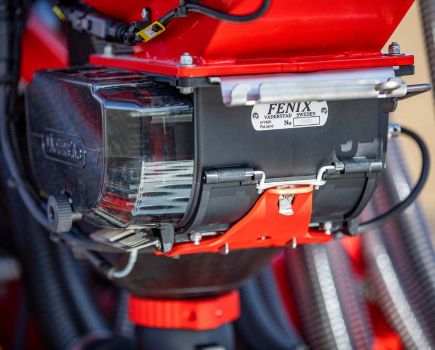Crop spraying faces a number of challenges, some which new technologies hope to overcome. But is there a danger of change for change’s sake? CPM attended a CHAP webinar to learn more.
By Melanie Jenkins
Currently, UK farmers face a number of spray-related difficulties, including loss of active ingredients, resistance of target weeds or pathogens, as well as environmental and human safety. With government aims for carbon neutrality and agricultural inflation leading growers firmly down a route of input reduction, one of the biggest challenges is to maintain yields while using inputs more efficiently.
Dr Clare Butler Ellis of Silsoe Spray Applications Unit highlighted these challenges when she spoke during a CHAP webinar on the future of spray applications. Looking to the future, she believes there’s a place for innovation to supplement current technologies, but we should be wary of innovation for innovation’s sake.

Applying products at the right time and in the right conditions is a consistent challenge faced by growers.
“Currently, some technology seems to be a solution looking for a problem to solve. Cost benefits can be difficult to demonstrate and the promise of new technologies isn’t always matched by their field performance,” she says.
She also points out that the agronomy to support some new approaches is missing and the logistics of the complete operation may not have been fully considered.
Clare highlights it’s important to acknowledge the current regulatory framework is essential so that the industry can demonstrate safe use of pesticides, but there’s a clear need for regulations to be more flexible to help facilitate innovation in spray application.
“In practice, current regulations were developed around long-established technology and there’s no doubt this can slow down and restrict innovation. However, a more flexible approach to regulation mustn’t compromise human and environmental safety, so this would have to be demonstrated and raises funding questions.”
So what can be done to support the development of new technology? Until very recently, pesticide regulations were under a blanket agreement across the EU, but with Great Britain no longer subject to EU law, this might provide new opportunities, suggests Clare.
“However, it’s quite difficult for GB to do this alone because it’s a relatively small market for some of the global companies that supply agrochemicals. Even if government wants to be more flexible in its approach, it’ll be difficult for these companies to respond for this reason.”

Current regulatory framework is essential to demonstrate safe use of pesticides, but there’s a clear need for flexibility to facilitate innovation, believes Dr Clare Butler Ellis.
For growers, it might seem like the challenges they face year-in year-out are fairly consistent. Of these, applying products at the right timing and in the right conditions is one of the most important.
“Spray operators report there are too few spray days, so this makes work rate crucial. That means equipment that’s able to cover the ground quickly and in a timely fashion. It’ll be quite a challenge for new and emerging technologies to keep up with this demand.”
So where are the opportunities? Recent work conducted by Silsoe has looked at protected crops on a small-scale basis with manual applications. Clare believes it’s an area where there’s plenty of scope for new technologies to improve on current practice.
Another area where innovations could be advantageous is to facilitate spray applications in inaccessible locations, says Clare. As an example, she cites remotely piloted systems, which could be useful alongside railways to avoid track closures while spraying is carried out, or on steep hillsides that would otherwise be inaccessible with machinery.
Technologies are also helping farmers use less through a more targeted approach, she highlights. Patch spraying and variable rate application have been around for a long time, but new technologies are being developed that enable pinpoint accuracy to make these practices much more efficient.
Small Robot Company (SRC) has taken innovation to a new level with its development of per plant farming techniques. Speaking at the webinar, the company’s Andy Hall (who has since moved to a new company) believes Cloud computing could provide a solution to a number of the issues the industry faces, including pesticide use, cutting reliance on manpower, minimising costs and potentially improving yields.
“From our point of view, we see per plant farming as the way forward. Robots and AI give us the opportunity to save on chemicals and also reduce adverse effects on the environment. And subsequently this saves money,” he adds.
But he feels it all comes down to strategy. “I don’t think there’s one solution. If you’re treating an entire field, the best way to do that is with a crop sprayer. But if you want to treat environmentally sensitive areas or something with specific resistance, we could treat individual plants or small areas.”
The philosophy behind Small Robot Company is to understand every plant to optimise crop care. “By doing this we can take a very targeted approach, improve biodiversity and reduce chemical use and emissions,” he believes.
“We think that, at the moment (based on 2022 figures), we can save up to 15% of fertilisers, 77% of herbicides and 24% of input costs, while increasing yields by about 4%. And we’re forecasting that we’ll be able to save more in the future,” he adds.
According to estimates for 2025, Small Robot Company anticipates its robots will enable a 40% reduction in fertilisers, 85% in herbicides and, consequently, input costs falling 40% while yields increase 40%.
“This all starts with per plant intelligence. Using our ‘Tom’ scouting robots, we’re able to geolocate and analyse every plant at millimetre accuracy,” he explains.
The robot collects images and AI is used to identify individual plants and their requirements. “We don’t have all the answers yet but we’re developing them over time.”
But for now, he feels there are two strategies that can be used – firstly surveying and then spraying. The fastest way for the firm to offer individual treatment plans to farmers, currently, is to provide maps produced using its scouting robot, ‘Tom’, and artificial intelligence (AI), ‘Wilma’.
This information can then be used for targeted applications if farmers have section, nozzle and boom control, he explains. “The advantage of this strategy is that the farmer and agronomist can see the data and can make the decision to spray.”
The other strategy the company is working on is surveying and spraying at the same time using just one robot. “We have a robot with a camera and AI so when it detects disease, weeds or pests, it can target it directly with a spray.

The ‘Tom’ scouting robot uses imagery and AI to geolocate and analyse plants at millimetre accuracy.
“The advantage of this is instant treatment, so if it’s a pest, for instance, we can treat it before it moves. We have the potential to treat many things, but we’re limited by the AI that we have right now.
“However, the disadvantage of that strategy is the amount of chemical which has to be carried,” explains Andy. “This can be ameliorated by having onboard mixing, where a variety of different chemicals are on board the robot in a concentrated form. These are then mixed on the robot as required and sprayed.”
But the big issue is how to cover large areas of ground, he says, confirming one of the pitfalls Clare highlighted earlier. “It’ll be slower doing this than just surveying with a robot and certainly slower than using a tractor.”
But training the AI and producing systems able to cope with the amount of data required for operations that can react at speed are some of the challenges still to be overcome, he says.
“There are problems and advantages, but this is an area we’ll really see advancing in the future. There’s massive potential savings for farmers and the environment. Both are equally important.
“I’ve been working on spraying with robots for three years and the more you learn, the more difficult it gets. But we now have the opportunity to rethink the way we treat fields and move away from treating them in their entirety to treating individual plants.”
This article was taken from the latest issue of CPM. For more articles like this, subscribe here.
Sign up for Crop Production Magazine’s FREE e-newsletter here.




